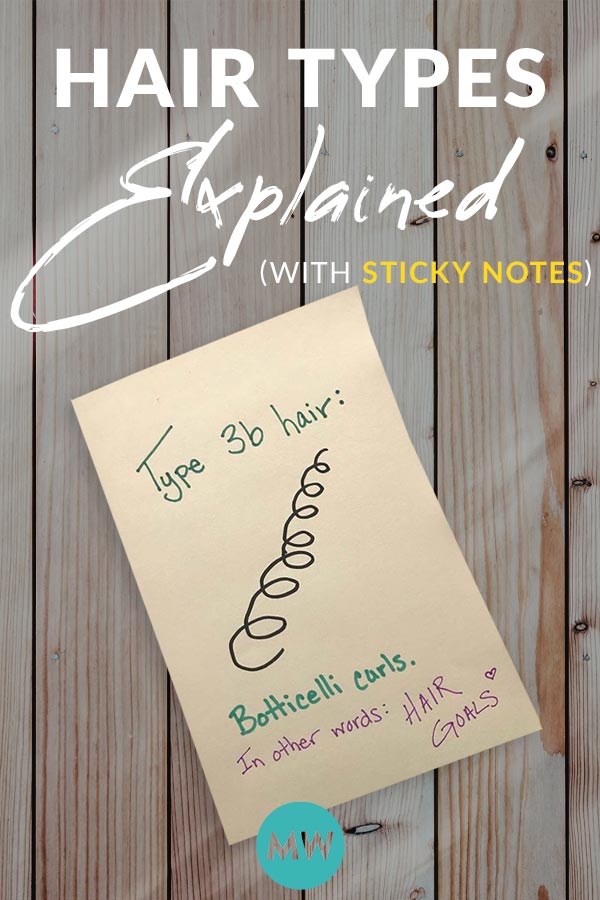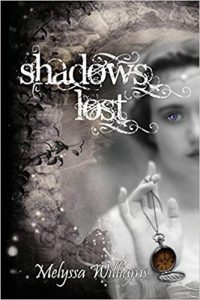If you’re here, you’re likely befuddled, bemused, and bedraggled over curly hair types.
What’s yours? 4a? 2c? How do you know? Why is this so hard? Should I give up and flat iron?
Where would Inigo Montoya and The Six Fingered Man fit on a curly hair chart? How do I find The Six Fingered Man? Once I find him, how do I find you again?
In the immortal words of Inigo Montoya,
Let me ‘splain! No. There is too much. Let me sum up.
Inigo
Incidentally, I’d say Inigo’s hair type is a 2C – 3A.
What Are Curly Hair Types?
Curly hair types, or curl pattern types, are a system of numbers (1 through 4) and letters (A through C) that define the level and size of hair curls.
Don’t worry, there won’t be much math from here on out.
Knowing your hair curl type will help you better understand how to care for and style your hair. It’s science!
Sorta.
Hair Type Chart
Here’s an easy visual.
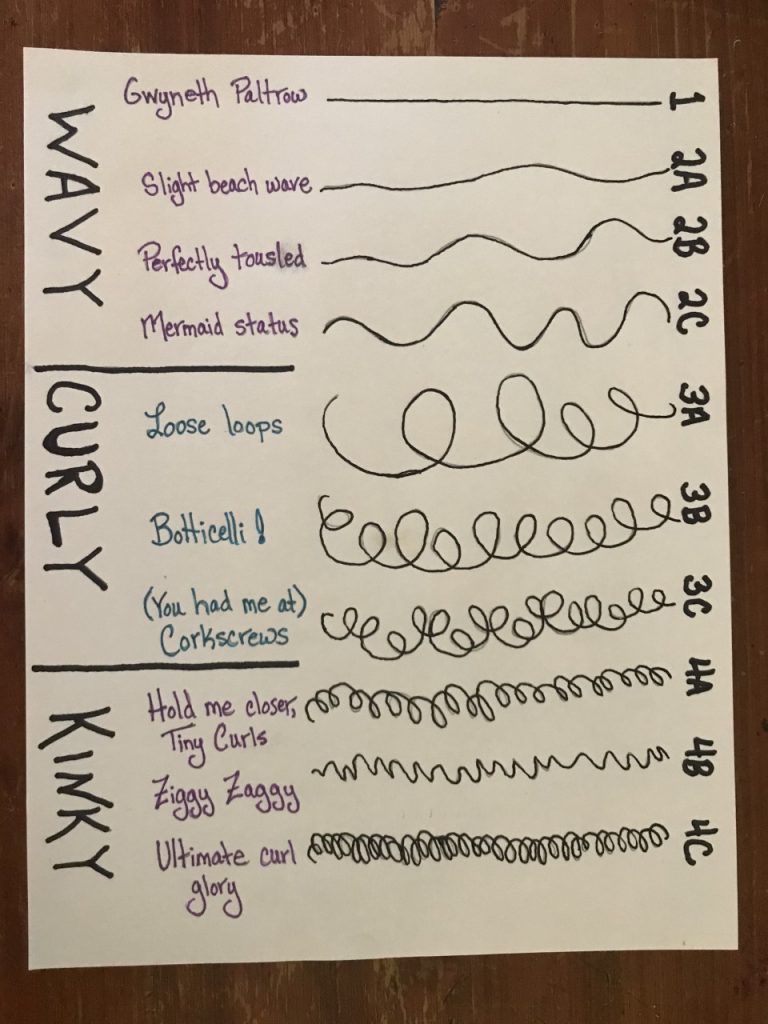
Curly Hair Types Explained
Read them all, or hit one of these links to jump to a specific section.
- The Four Numbers (1, 2, 3, 4)
- The Three Letters (A, B, C)
- All Ten Types of Hair, Explained
The Four Types of Hair (by Number)
The numbers represent broad curl styles. From non-curly (looking at you, Type 1) to coily (Type 4), your hair will fall into one of these overarching categories.
Type 1 Hair: Straight
Straight hair is straight when it’s dry, and it’s straight when it’s wet (all you curlies just gasped in confusion and delight).
It stubbornly refuses to ‘take a curl,’ even with a curling wand, and even if it does, it’ll likely ‘fall out’ by the end of the day. Straight haired humans usually bemoan the fact that their hair is “lifeless,” “flat,” and lacking in volume.
Straight hair can be thin, thick, and somewhere in between. It doesn’t play by the rules.
Type 2 Hair: Wavy
Wavy Type 2 hair can be the best of both worlds: it’s not so curly as to be untamed or tangled, but it’s not so straight that the brain beneath it feels bored and wallflower-esque. It can easily be straightened flat as a board, or with a little work can be coaxed into some curls.
Wavies have what hair stylists call ‘texture.’ As in, “your hair has some texture to it.” Which is a nice way of saying, “I can work with this.”
As with straight-haired people, wavies can fall flat easily. So you’ll tend to go light with products so as not to appear greasy.
Type 3 Hair: Curly
Curly hair is what you graduate to when the beachy waves become tighter, springier, and more like ringlets. They twist (but do not shout), shrink up, bounce, and “sproing.”
Sproinging is the technical, scientific word for the sound someone makes when they can’t resist pulling on one of your ringlets and it springs back up in a decidedly satisfying fashion.
If you’re familiar with sproinging, then you have type 3 curls.
Type 4 Hair: Coily
Coily hair is the curliest of all hairs. It’s tight and typically quite thick, though not always: once in a while you find someone with very thin coily curls.
Type 4 hair tends towards a coarser texture, and the clumps (the curl families, I like to call them) are tinier in dimension than their wavy and curly counterparts.
Coily girls and boys are usually guilty of owning approximately 249376534.3871/2 bottles of hair products in their never-ending quest to find their Holy Grail. You can find coilies in the ethnic hair section of the drugstore and it would behoove you to pick their brain about what to buy because these lovelies know whereof they speak!
The Three Sub-Types of Hair (by Letter)
One you’ve determined your general curl category (the number), it’s time to get more specific. With hair types, the letter (A, B, or C) represents the breadth or density of the curls.
Type A Hair: Wide Curls
Think a mixture of beachy waves and “curled with a curling iron” look. Easiest to live with and always in style!
If the good Lawd blessed you with this type, blush modestly, flip that hair, and go about your tree hugging, boho life.
We love you, although secretly we kind of wish you’d experience some frizz or tangles once in a blue moon.
Type B Hair: Medium Curls
This is where I fall mostly (although you’ll likely find you are a mixture of at least two hair types).
The hair on my bottom layer – closest to my neck – is practically perfect ringlets about the width of a Sharpie.
The top of my head is slightly looser. This type of hair needs plenty of product to tame its wild night-life ways, and plenty of moisture to keep it happy.
It’s a balancing act with the Type Bs.
Type C Hair: Tight Curls
People with the tightest of the tight curls and coils and kinks usually have the thickest and most coarse of all the hairs.
They can go longer without washing and restyling as long as they’ve really paid close attention and gone slowly in their wash days.
All Ten Types of Hair
1
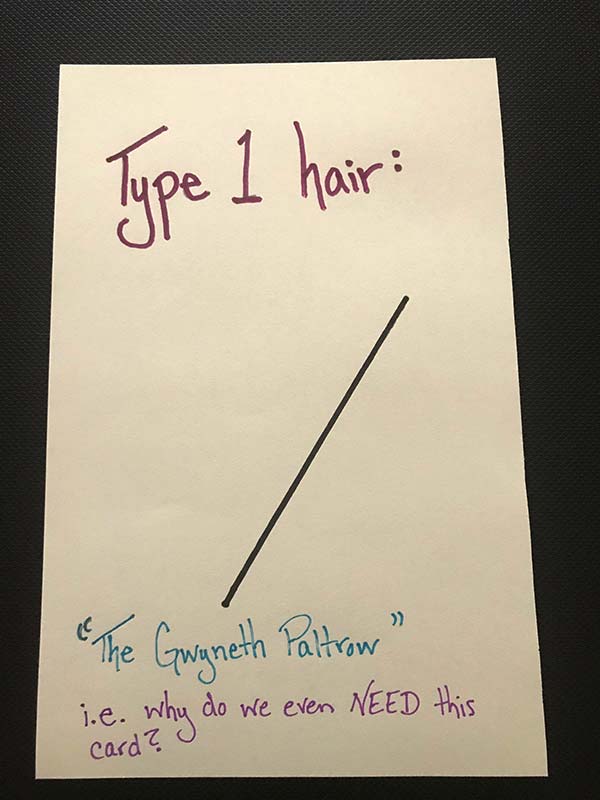
Type 1 hair is straight hair.
I mean, if you’re reading this you probably don’t have this hair type, right?
If your hair is naturally this straight, you’re adorable and we heart you, but go on your merry way.
Mostly, curly girls and boys are fascinated by this creature: much like unicorns, leprechauns, and mermaids, we find you rare and mystical, but we believe in you.
And when we’re having a bad curl day, we envy you.
2A
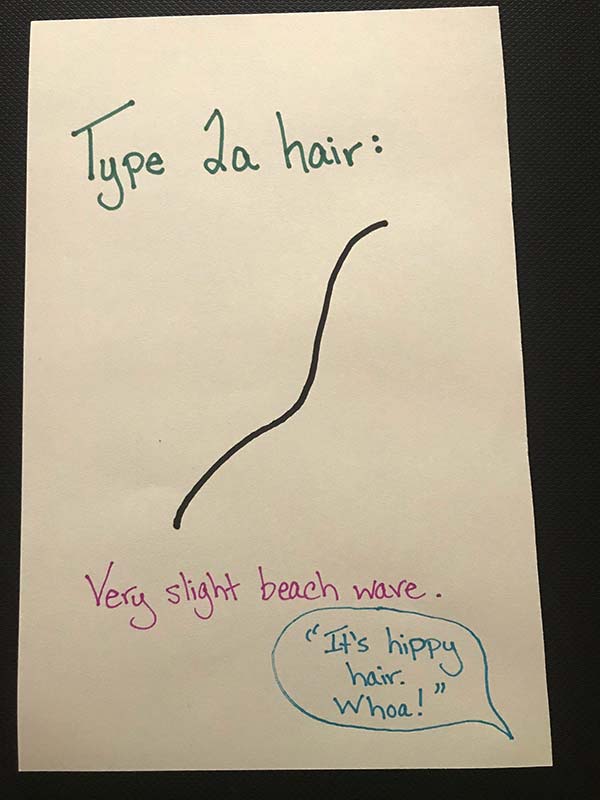
Type 2A hair is characterized by gentle waves, with plenty of breadth between each peak.
It’s boho queen style. You belong on the beach in the Pacific Northwest, drinking a local kombucha, barefoot. Braid a little piece by your face or add a scarf, and you have achieved perfection.
2B
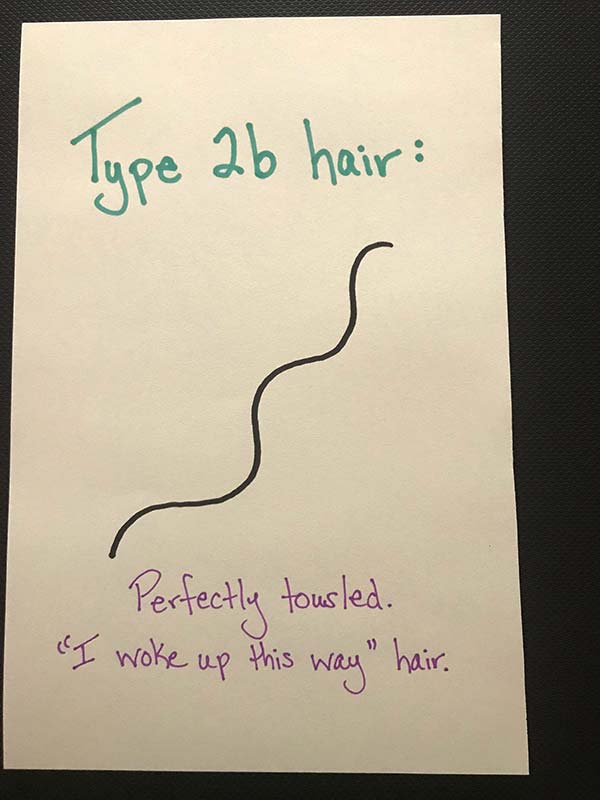
Type 2B hair is wavy, but with medium-tight peaks and furrows.
It’s bedhead, but in a gorgeous way.
Did you wake up this way?
Maybe she’s born with it … maybe it’s Shea Moisture …
2C
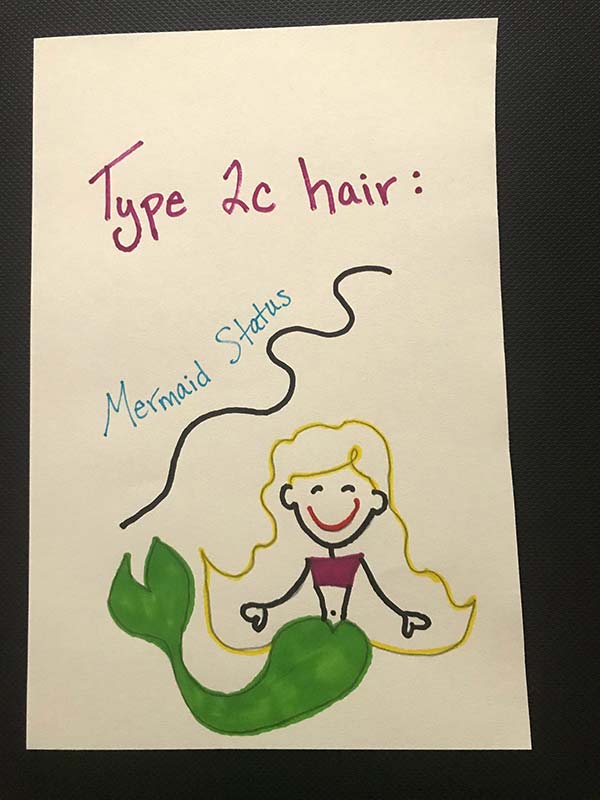
Type 2C hair is coarser, with some waves turning into possible curls. Thick, bouncy and lush.
Waves for days. The stuff dreams are made of. Not so curly as to be tangled, not so straight as to be flat. Juicy, springy, and ready to star in a shampoo commercial.
3A
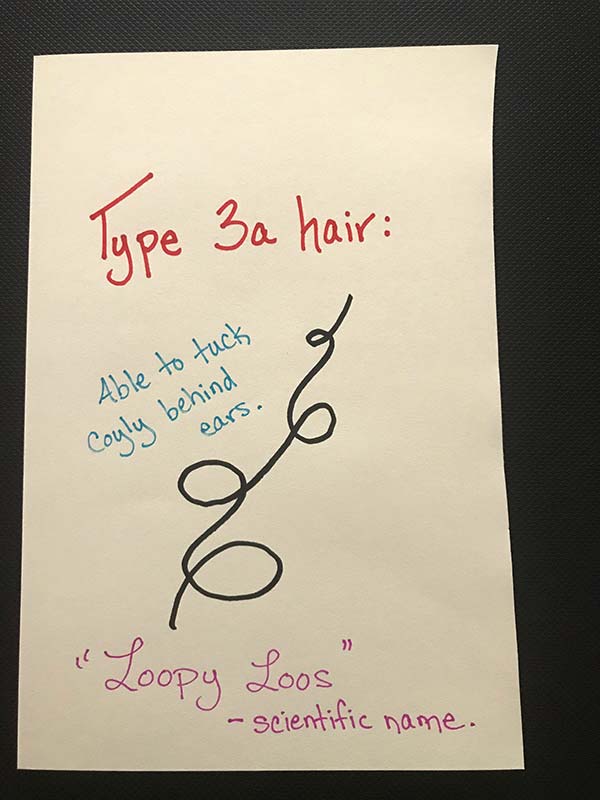
Type 3A hair features springy, well-defined curls that loop in S-shapes with some full twists.
Jane Austen heroines have this. They tumble down provocatively from messy buns in a romantic way that catches the attention of every farm boy, Heathcliff, Mr. Darcy, and dashing suitor in a twenty-mile radius.
3B
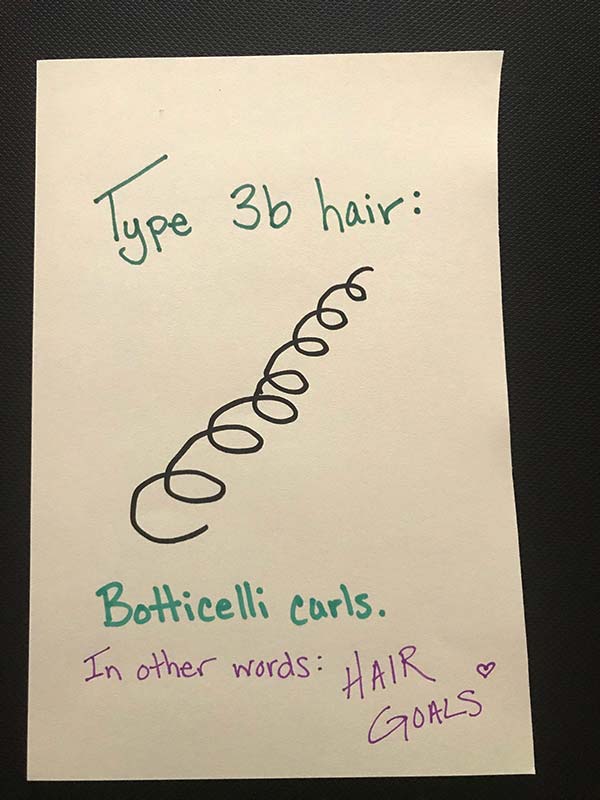
Type 3B curls are ringlets that result in hair with a full body and bounce.
Flawlessly formed (making the skeptical among us wonder if they’re hiding a curling iron under their sink), Botticelli curls are bouncy and lush. Remember when Keri Russell cut her hair and everyone quit watching Felicity while they were in mourning? It’s like that.
3C
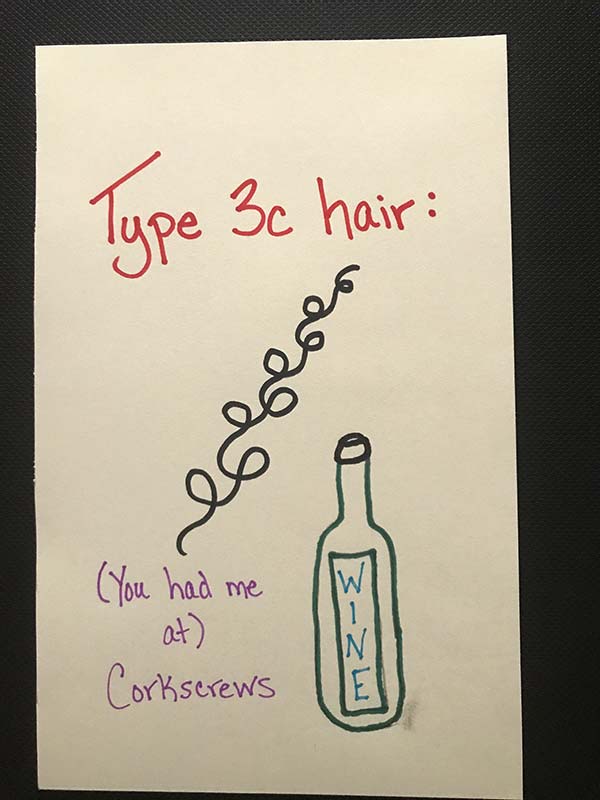
Type 3C hair is full and springy, with corkscrews and tight ringlets.
Starting to get tinier in dimension, 3C curls are usually the size of a sharpie. They are prone to knots and need the perfect balance of products, so as to remain frizz-free and kempt.
Why is unkempt a word, but kempt isn’t?
4A
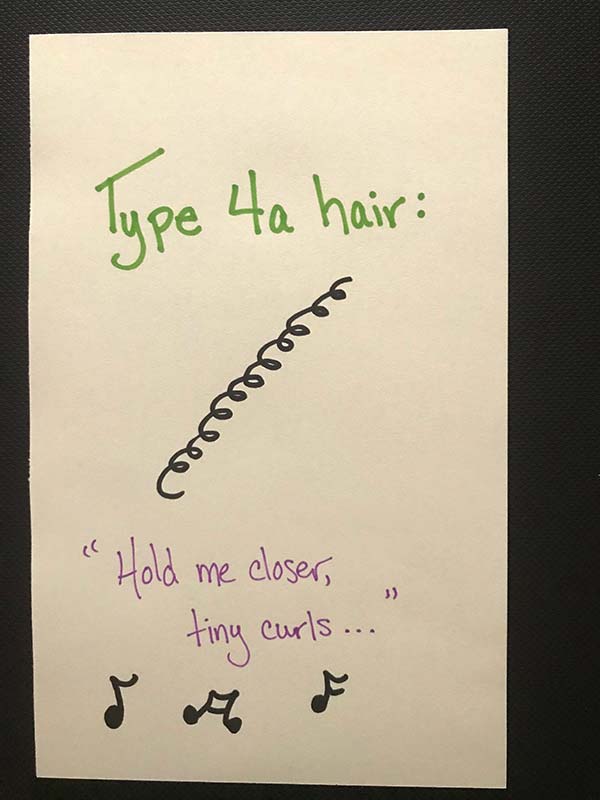
Type 4A is light, soft, tight corkscrews that are tiny, bouncy, and full of life.
They may behave or they may have a mind of their own. These coils are tightly wound in all the best ways.
4B
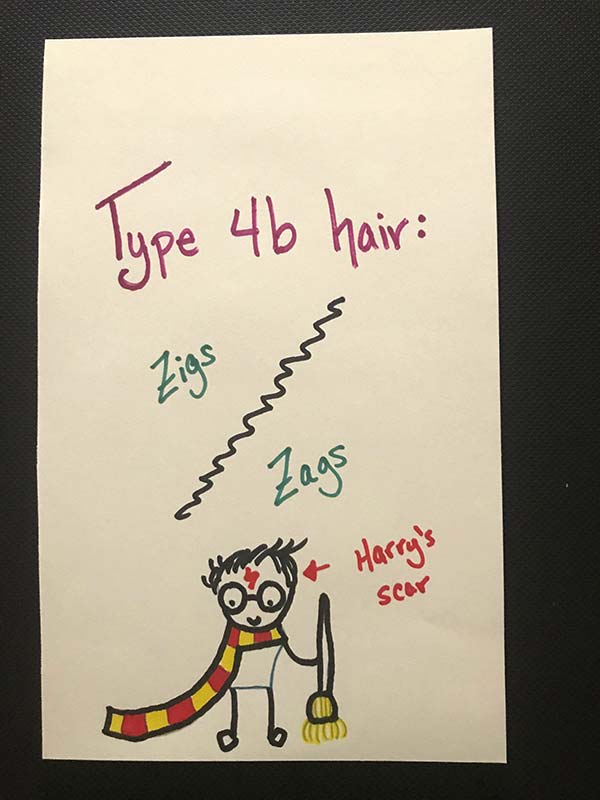
Type 4B hair is less circular in shape and more of a lightening bolt, bending at angles rather than curling or waving.
4B hair loves cowashing (cleansing conditioners), and maybe an oil throughout the week to give gloss and shine.
4C
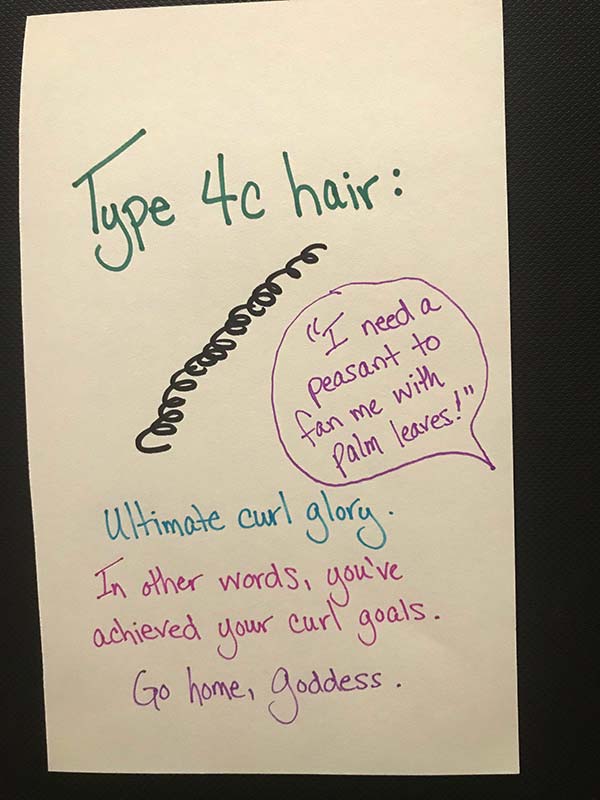
Type 4C is unique in that it rarely has a defined curl pattern. It is thick and robust, with angles like 4B, but even tighter.
Thick and glorious and larger than life. The bigger the hair, the closer to Jesus.
Curly Hair Care
Curly hair is a blessing and a curse! People with straight hair always want some texture, curls, bounce, and pizzazz. While the curlies just wish they could go outside in the rain and not shrink up/grow like a brillo pad.
Sure, it’s harder to care for. It’s a pain sometimes. It’s out of control, stubborn, and refuses to style the same way twice. It’s the two-year old toddler of hairs: it’ll give you endless grief and then want to cuddle and tell you they love you.
You may have heard of the Curly Girl Method; overall, it’s a great (and natural) way to care for your curly hair but it can be a bit of a pain and people can get real cultish about it. So I developed my own care routine, which you can read here: How to Do the Curly Girl Method (the easy way).
Learning to care for your curls is a lifelong mission. And don’t get me started on how many times* your hair will totally change its texture and curl type in your life!
*For women, your curly hair type may change around 3-5 times. Hullo, puberty, pregnancy, post-partum, and menopause, we’ve been expecting your call.
But once you find your routine, quit striving for perfection, embrace your waves and coils and ringlets, and be confident knowing that you’re on the right road!
And then you can help others with their wayward tresses.
Pin It


